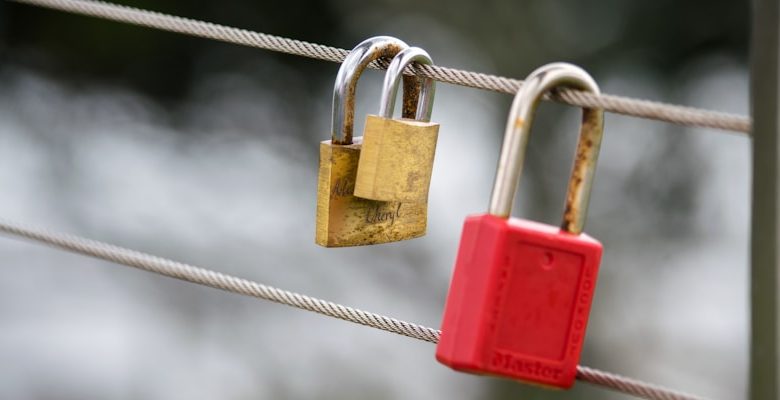Implementing Two-Factor Authentication for Enhanced Protection

- Understanding Two-Factor Authentication
- Benefits of Implementing Two-Factor Authentication
- How Two-Factor Authentication Works
- Best Practices for Setting Up Two-Factor Authentication
- Common Myths About Two-Factor Authentication Debunked
- Steps to Take If You Lose Access to Your Two-Factor Authentication Method
Understanding Two-Factor Authentication
Two-factor authentication (2FA) is a security process that requires users to provide two different authentication factors to verify their identity. This adds an extra layer of security to user accounts, making it more difficult for hackers to gain access.
One common form of 2FA is SMS-based authentication, where a user enters their password and then receives a one-time code via text message that they must enter to access their account. Another form is app-based authentication, where a user generates a code using an authentication app on their smartphone.
By implementing two-factor authentication, businesses can significantly enhance the security of their systems and protect sensitive information from unauthorized access. It is a simple yet effective way to prevent unauthorized access to user accounts and minimize the risk of data breaches.
Benefits of Implementing Two-Factor Authentication
Implementing two-factor authentication offers numerous benefits for enhancing security measures and protecting sensitive information. By requiring users to provide two different authentication factors, this additional layer of security significantly reduces the risk of unauthorized access and potential data breaches.
One of the key advantages of two-factor authentication is its ability to strengthen password security. With traditional password-based authentication alone, the reliance on passwords can leave systems vulnerable to brute force attacks, phishing scams, and password guessing. By adding a second factor, such as a unique code sent to a mobile device or biometric data, the likelihood of an unauthorized user gaining access is greatly minimized.
Furthermore, two-factor authentication can help organizations comply with regulatory requirements and industry standards related to data protection. By implementing this extra layer of security, businesses can demonstrate a commitment to safeguarding sensitive information and maintaining the trust of their customers and stakeholders.
In addition to improving security and regulatory compliance, two-factor authentication can also enhance user experience and convenience. While some may view the extra step as cumbersome, the peace of mind that comes with knowing their accounts are better protected can outweigh any minor inconvenience. Ultimately, the benefits of implementing two-factor authentication far outweigh the potential risks of relying solely on passwords for authentication.
How Two-Factor Authentication Works
Two-factor authentication (2FA) adds an extra layer of security to your online accounts by requiring not only a password and username but also something that only the user has on them, i.e., a piece of information only they should know or have immediately to hand – such as a physical token.
When you enable 2FA on an account, you will typically be required to provide a second piece of information in addition to your password when logging in. This can take the form of a code sent to your mobile device, a fingerprint scan, or a security key.
By requiring two different forms of identification, 2FA makes it much harder for hackers to gain unauthorized access to your accounts, even if they have your password.
Although no security measure is foolproof, implementing 2FA is a highly effective way to enhance the security of your online accounts and protect your sensitive information from cyber threats.
Best Practices for Setting Up Two-Factor Authentication
When setting up two-factor authentication, it is important to follow best practices to ensure maximum security for your accounts. One of the key steps is to use a strong and unique password for your accounts. Avoid using common passwords that can be easily guessed or cracked by hackers. Additionally, enable two-factor authentication on all of your accounts that offer this feature to add an extra layer of security.
Another best practice is to use different authentication methods for each account. This can include using a combination of SMS codes, authenticator apps, or hardware tokens to verify your identity. By diversifying your authentication methods, you can reduce the risk of a single point of failure compromising all of your accounts.
Regularly review and update your two-factor authentication settings to ensure that they are up to date and secure. This includes removing any old or unused authentication methods and devices from your accounts. It is also important to be vigilant for any suspicious activity on your accounts, as this could be a sign of a security breach.
Finally, educate yourself on the latest security threats and best practices for protecting your accounts. Stay informed about new hacking techniques and security vulnerabilities so that you can take proactive steps to safeguard your information. By following these best practices, you can enhance the protection of your accounts and reduce the risk of unauthorized access.
Common Myths About Two-Factor Authentication Debunked
There are several common myths surrounding two-factor authentication that may lead some to believe it is not worth implementing. Let’s debunk some of these misconceptions:
- Myth 1: Two-factor authentication is too complex for users to use regularly. In reality, two-factor authentication can be set up to be user-friendly and seamless, providing an extra layer of security without causing inconvenience.
- Myth 2: Two-factor authentication is only necessary for high-profile individuals or organizations. The truth is, everyone can benefit from the added security that two-factor authentication provides, regardless of their status.
- Myth 3: Two-factor authentication is foolproof and cannot be hacked. While two-factor authentication significantly reduces the risk of unauthorized access, no security measure is completely immune to hacking attempts. It is still essential to practice good security habits.
- Myth 4: Two-factor authentication is expensive to implement. In fact, many two-factor authentication solutions are affordable and accessible to individuals and businesses of all sizes.
- Myth 5: Two-factor authentication is only necessary for online accounts with sensitive information. While it is crucial to protect sensitive data, all accounts can be vulnerable to hacking attempts. Implementing two-factor authentication across all accounts adds an extra layer of security.
By debunking these myths, it is clear that two-factor authentication is a valuable security measure that can benefit everyone. Implementing two-factor authentication is a simple and effective way to enhance protection against unauthorized access.
Steps to Take If You Lose Access to Your Two-Factor Authentication Method
If you find yourself in a situation where you no longer have access to your two-factor authentication method, do not panic. There are steps you can take to regain access to your accounts. The first thing you should do is to contact the support team of the service you are trying to access. They will be able to guide you on the best course of action to recover your account. In some cases, you may be required to provide proof of your identity before they can help you regain access.
If contacting support does not yield any results, you may need to consider alternative methods of verifying your identity. This could involve answering security questions, providing a backup code, or using a recovery email or phone number. It is important to follow the instructions provided by the service carefully to ensure a smooth account recovery process.
In the future, it is a good idea to set up multiple two-factor authentication methods for your accounts. This way, if you lose access to one method, you can still use an alternative method to verify your identity. Additionally, make sure to keep your backup codes in a safe place where you can easily access them when needed. By taking these precautions, you can ensure that you are always able to access your accounts securely, even if you lose access to your primary two-factor authentication method.



